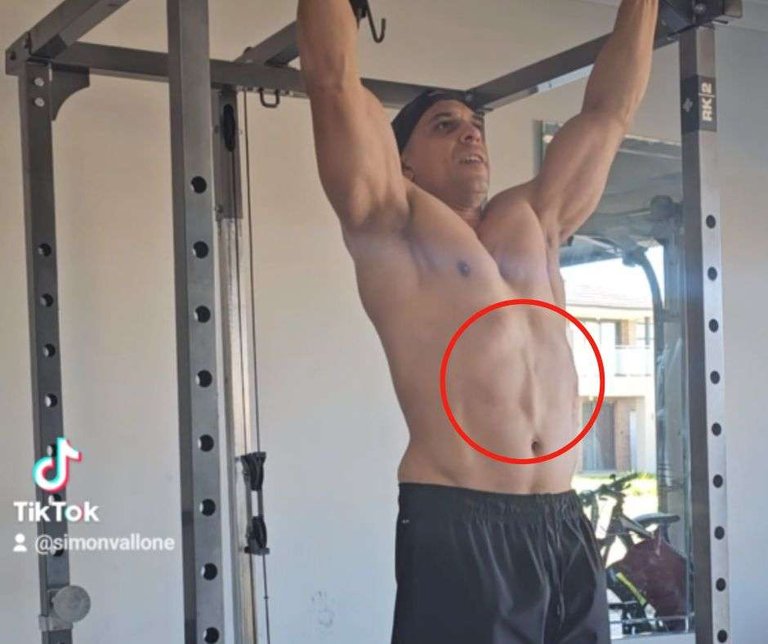What Is Diastasis Recti?
What is Diastasis Recti?
Today we are going to delve into what is diastasis recti. Having recently had this condition occur to me I thought it would be good to share some of what I have recently learned with the broader community so that others can avoid having it happen to them or if they do have it, some of the things you can do to rectify the problem.
Diastasis recti is a condition that affects many people, especially women postpartum yet it remains relatively unknown to many. Understanding this condition and knowing how to address it can significantly improve one’s quality of life. Today we’ll dive into what diastasis recti is, how to identify it and some effective exercises to help fix it. If you do have it, you might also be excited to know that as of the 1 July 2022 in Australia treatment was introduced under Medicare.

What Is Diastasis Recti?
Diastasis recti occurs when the large abdominal muscles separate. These muscles, known as the rectus abdominis, are normally joined at the midline of the abdomen. However, factors such as pregnancy, obesity, or improper exercise can cause them to separate, leading to a gap. This separation can result in a noticeable bulge in the middle of the abdomen, often referred to as a “pooch.”
Symptoms of Diastasis Recti
he primary symptom of diastasis recti is a visible bulge or pooch in the abdomen, especially when the abdominal muscles are strained. Other symptoms may include:
Lower back pain
Poor posture
Bloating and digestive issues
Weakness in the abdominal muscles
If you notice any of these symptoms, it’s crucial to consult with a healthcare provider to get a proper diagnosis and advice on the best course of action.

Exercises to Help Fix Diastasis Recti
While it’s essential to seek medical advice, certain exercises can help improve diastasis recti by strengthening the abdominal muscles and promoting their return to the midline. Here are a few exercises that can be beneficial:
Pelvic Tilts
Lie on your back with your knees bent and feet flat on the floor.
Gently tilt your pelvis upward, flattening your lower back against the floor.
Hold for a few seconds, then release.
Repeat for 10-15 repetitions.
Kegels
Sit or lie down comfortably.
Tighten your pelvic floor muscles (as if you’re trying to stop the flow of urine).
Hold for a count of 5, then release.
Repeat 10-15 times, several times a day.
Heel Slides
Lie on your back with your knees bent and feet flat on the floor.
Slowly slide one heel along the floor, straightening your leg.
Return to the starting position and repeat with the other leg.
Perform 10-15 repetitions on each side.
Transverse Abdominal Breathing
Sit or lie down with your knees bent.
Place your hands on your abdomen.
Take a deep breath in, allowing your belly to rise.
Exhale while drawing your belly button in towards your spine.
Hold for a few seconds, then release.
Repeat for 10-15 breaths.
Modified Plank
Start on your hands and knees.
Walk your hands forward until your body forms a straight line from your head to your knees.
Hold for 10-15 seconds, gradually increasing the duration as your strength improves.
Avoid letting your back sag or arch excessively.

Consult your Doctor and Seek Professional Training
While these exercises can be beneficial, it’s important to note that diastasis recti can vary in severity. In some cases, professional medical intervention may be necessary. A healthcare provider can assess your condition and provide a tailored treatment plan. Ignoring diastasis recti can lead to further complications, such as hernias or chronic back pain, so seeking professional advice is crucial.
Diastasis recti is a common condition that can affect anyone, particularly postpartum women and men over the age of 35 who vigorously exercise. By understanding the condition, recognizing the symptoms and incorporating specific exercises into your routine. You can help improve your abdominal strength and reduce the separation of your rectus abdominis. However, always remember the importance of consulting with a healthcare provider if you suspect you have diastasis recti. Early diagnosis and intervention can make a significant difference in your recovery and overall health.
Take charge of your health and well-being, and don’t hesitate to seek professional advice if you need it. Your body will thank you!
▶️ 3Speak
Well damn!
I have all of those symptoms, except for the pooch itself 🫣
Good article mate!
!hiqvote
Haha be careful, can lead to further complications. Cheers for popping by!
Will definitely do some of the exercises you mention 🙌🏼
@caspermoeller89, the HiQ Smart Bot has recognized your request (2/3) and will start the voting trail.
In addition, @melbourneswest gets !LOOL from @hiq.redaktion.
For further questions, check out https://hiq-hive.com or join our Discord. And don't forget to vote HiQs fucking Witness! 😻
lolztoken.com
welche Zeit ist das dann?, Die Schülerin meldet sich und sagt gelangweilt: Vergangenheit Frau Lehrerin, wenn ich sie so ansehe mit Sicherheit Vergangenheit!
Credit: las3rbone
@melbourneswest, ich habe dir im Namen von @hiq.smartbot einen $LOLZ Token gesendet
Verwende den Befehl !WITZ oder !LOOL, um einen Witz und ein $LOLZ zu teilen.
NEW: Join LOLZ's Daily Earn and Burn Contest and win $LOLZ
.(6/8)
I’m scared cos I have those symptoms but I don’t want to accept that I’m dealing with such😅
Wow good friend, I didn't know much about diastasis recti before. It's eye-opening to learn how common it is and how specific exercises can help. Thanks for sharing this, it’s really helpful and very very informative